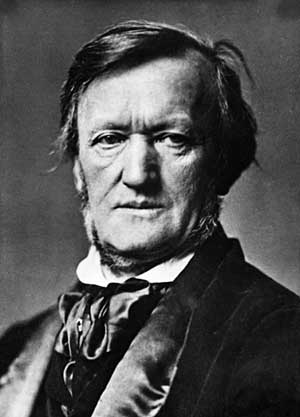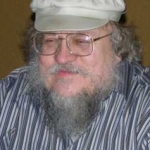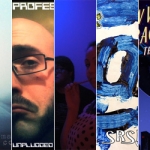
Not too long ago, I happened to see on TV some bits and pieces of the movie Watchmen, Zack Snyder’s 2009 big screen interpretation of the graphic novel by the same name. Since I knew practically nothing about it and had missed the beginning of the film, what I saw did not make much sense to me, but several times my attention was definitely caught by what I heard. Mixed in with the soundtrack of popular songs from the various eras being portrayed were several significant scenes that were backed up with famous (and some not-so-famous) works of classical music, so here we are with another Geek’s Guide to take a look at this interesting aspect of this film.
To start with, this scene caught both my ear and my eye, largely because it is reminiscent of the similar scene of fire, death, and destruction in Vietnam, right down to the music that accompanies the action, in Apocalypse Now (warning: it’s pretty violent…). Here’s a clip of it as used in the movie (which did not allow embedding), and below is an embedded version with just the music.
That famous background music is “Ride of the Valkyries” from the opera Die Walküre by 19th century German composer Richard Wagner (whose name is properly pronounced “ree-card vog-ner,” just so you know). You might also have heard it when you were a kid, as famously sung by Elmer Fudd to Bugs Bunny in the cartoon “What’s Opera, Doc?” (You know the one…”Kill the wabbit, kill the wabbit, kill the wabbit…”) Wagner (1813-1883) greatly admired the music of Ludwig van Beethoven, particularly Beethoven’s Ninth Symphony, which includes a large chorus and four soloists in the last movement. He thought that after Beethoven had taken the monumental step to add voices and text to what had previously been a strictly instrumental form, there was no longer a place for or a reason to have music that was only instrumental. Therefore, his body of work consists almost entirely of operas.

Wagner is perhaps most famous for a set of four operas based on Norse mythology called Der Ring des Nibelungen, known in English as the Ring Cycle: Das Rheingold (The Rhine Gold, referring to the German river), Die Walküre (The Valkyrie), Siegfried (the name of a significant character), and Götterdämmerung, (The Twilight of the Gods). Wagner designed them to be performed as a set, on four consecutive nights, and they were first presented in their entirety — over 15 hours of music total — in 1876. The operas tell the story of a ring made by the dwarf Alberich out of gold stolen from the Rhine maidens. The ring, which contains the power to rule the world, is subsequently fought over by a host of gods, mortals, and other assorted mythological figures. “Ride of the Valkyries” is the prelude to the third act of Die Walküre, which opens with a host of Valkyries, female creatures whose job it was to choose who was to die in battle, preparing to carry the bodies of fallen heroes to Valhalla.
The next scene that caught my ear was one containing the following music. It occurs towards the end of the film at the Antarctic lair of Ozymandias, but unfortunately I can neither remember exactly what was happening nor find a clip of that scene on YouTube. (If you can describe the scene for everyone or give us a link to a clip of it, please feel free to do so in the comments!)
What you just heard was an excerpt from the Requiem Mass in D Minor, K. 626, by Wolfgang Amadeus Mozart. Requiem is the common title, taken from the opening Latin text, for the Roman Catholic mass for the dead. A requiem mass is what you would hear if you went to a Catholic person’s funeral, but they can be said (or sung) at other times to memorialize someone, as was frequently the case when a composer wrote a musical setting of the mass. The section heard here is the opening minute of the “Requiem aeternam,” the first part of the mass. The text you hear is the first line, “Requiem aeternam dona eis, Domine,” which means “Grant them eternal rest, O Lord.”
Many composers since the middle ages have written Requiems, but people often remember Mozart’s Requiem particularly because of the circumstances surrounding its composition. The Requiem was commissioned by a Count Walsegg to commemorate the death of his wife. While working on the piece in the latter half of 1791, Mozart became seriously ill but he continued to work very hard to finish the piece, coming to believe that he was writing his own funeral mass. Unfortunately, he died on December 5, 1791, having completely finished the opening movement (what we hear in Watchmen) but leaving only parts of some of the other movements. Mozart was destitute when he died (he was known to love a good party, and most of the money he earned was quickly wasted on his vices) and was buried in an unmarked pauper’s grave in Vienna. His widow, Constanze, kept the unfinished status of the Requiem a secret for a while after his death because she needed the rest of the money that Walsegg had promised upon delivery of the work. She brought in another composer, Franz Süssmayr, to finish the piece, and it is his version of the work that is most often performed today, although from time to time others have undertaken the task of interpreting and finishing what Mozart started.
The other classical composer whose name appears several times in the music list is Philip Glass, and the above clip is of two of his pieces from the soundtrack. Unfortunately, I again could not find movie clips that I could definitively identify as containing Glass’s music, although I have seen several online sources (of unknown reliability) stating that “Pruit Igoe” and “Prophecies” are associated with the scenes of Dr. Manhattan on Mars. Glass is an American composer, born in Baltimore, Maryland, in 1937. He is best known for writing music in a style known as minimalism, characterized by the repetitive sound that comes from its use of only a few small musical ideas to create a long work. When the basic musical ideas change, the changes tend to be subtle and gradual. “Pruit Igoe” and “Prophecies” come from the soundtrack to the 1982 film Koyaanisqatsi: Life Out of Balance. The Watchmen soundtrack also includes a piece from Glass’s 1981 opera Satyagraha.
This concludes another Geek’s Guide to Classical Music. Thank you for your attention once again. I do not yet have another Geek’s Guide in the works, so if there is a movie or TV show that you want me to explore, or a piece that you would like identified, please be sure to let me know in the comments. Unless I happen to hear a piece of classical music that I think needs an article, I am depending on you, dear readers, to let me know what you’re interested in!






